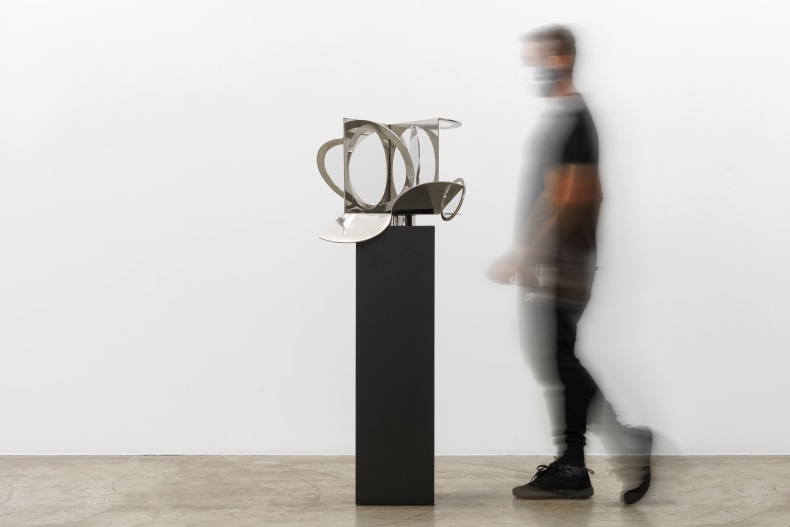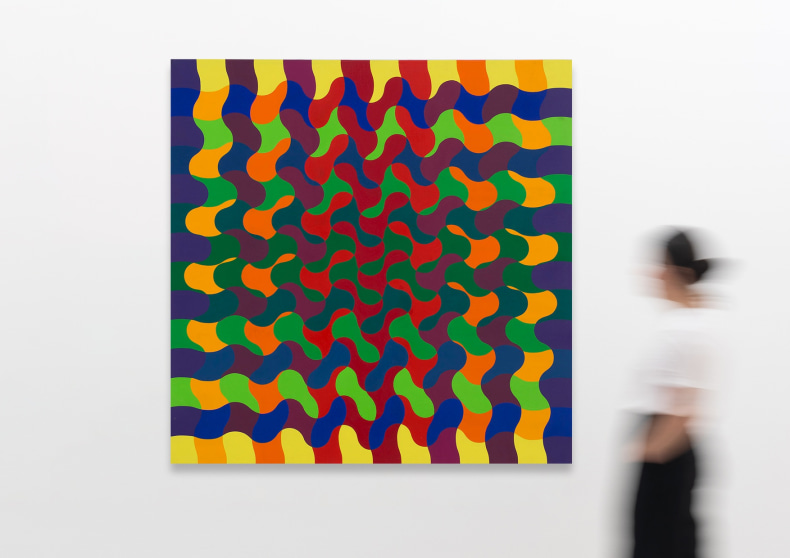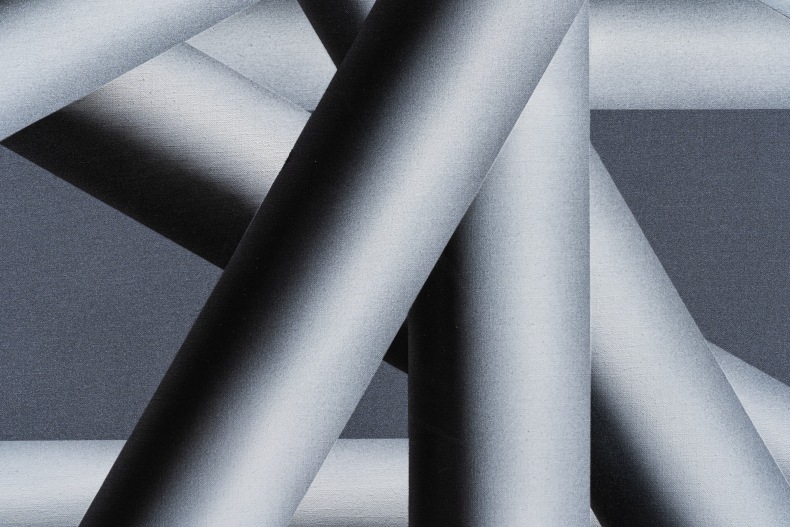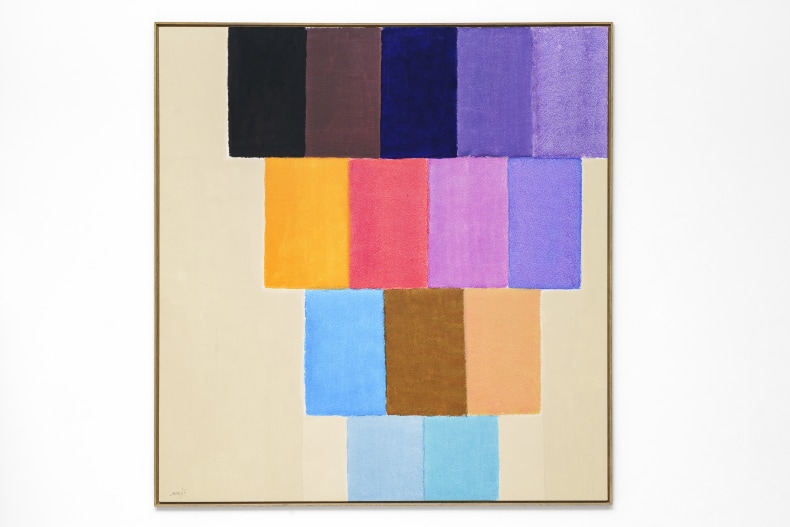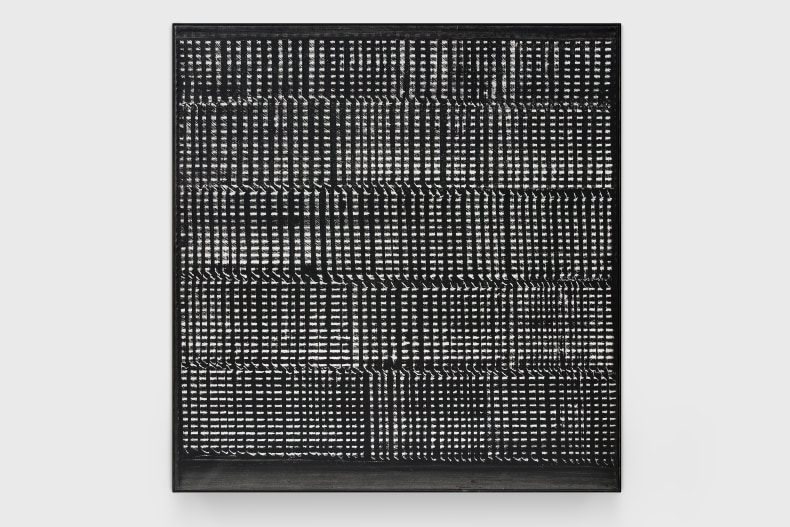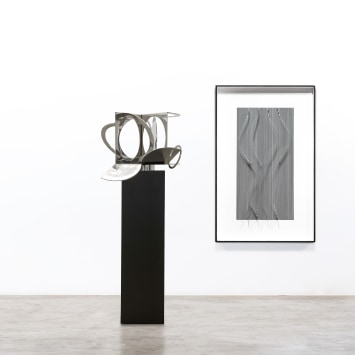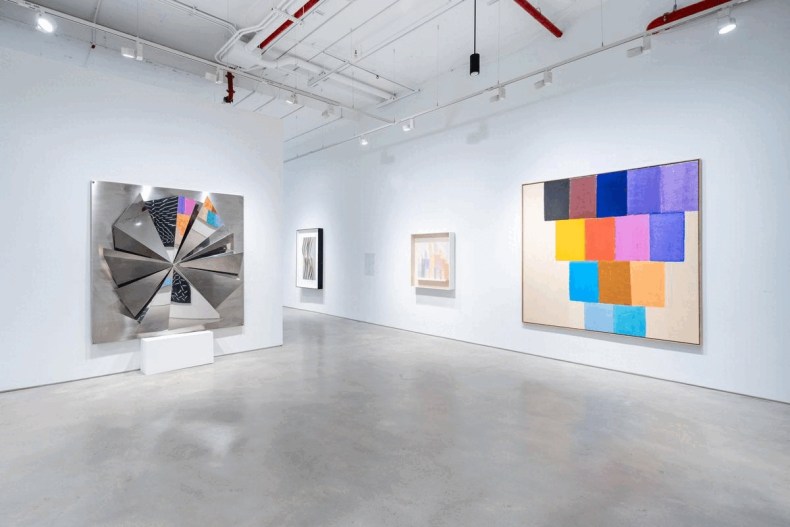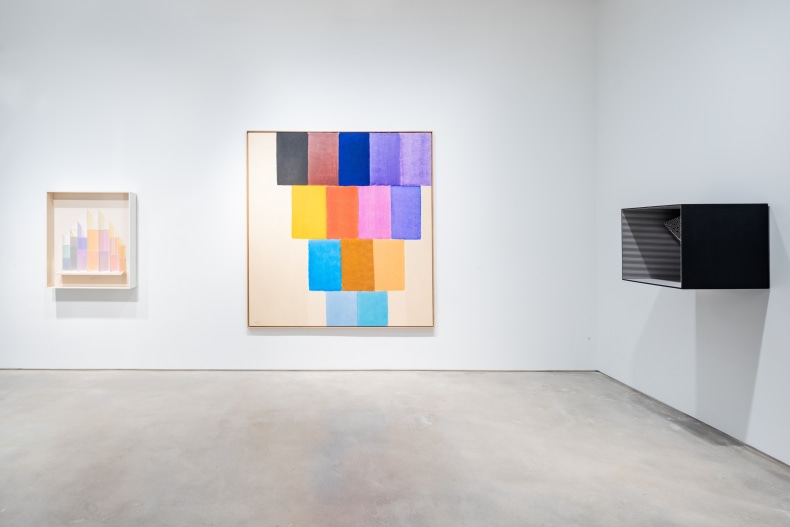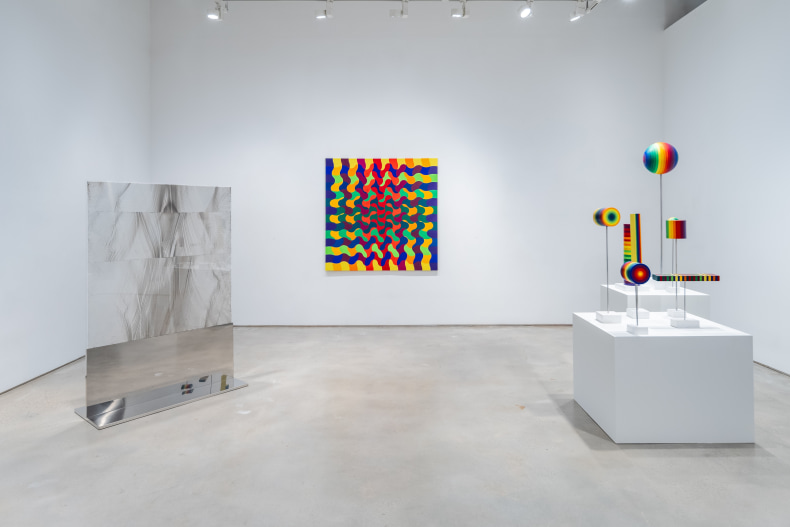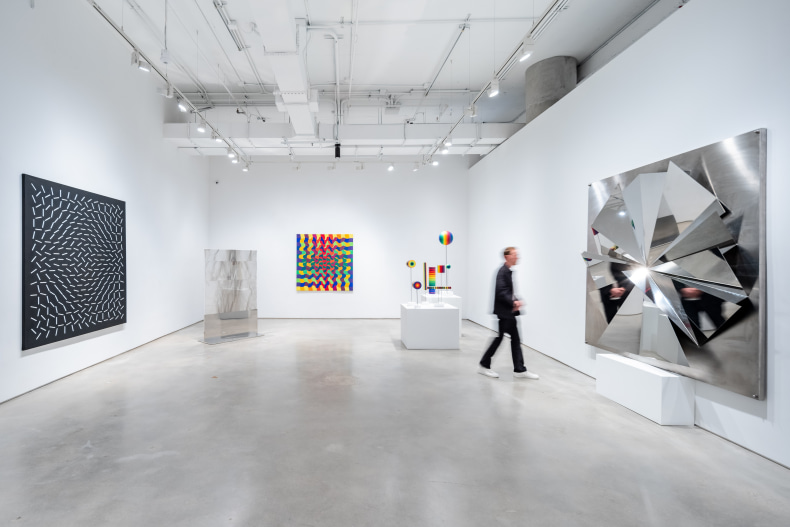Nara Roesler New York is pleased to present the exhibition Parallel Inventions: Julio Le Parc & Heinz Mack, curated by Luis Pérez-Oramas, bringing together about 25 historic and recent works by both artists, central figures of Kinetic and Op Art , who have explored light and movement in their artistic practices. The exhibition, which opens to the public on May 9, includes iconic works from all the phases of their production, since 1955 to today. Albeit through different artistic approaches, Le Parc and Mack have developed throughout their careers a production centered on the search for light, color, and movement.
Julio Le Parc (b.1928) and Heinz Mack (b.1931) have, produced abstract works that are similarly transformational of our understanding of the visual realm. Both of them were instrumental figures in the foundation and activity of two of the most influential and transformative avant-garde groups in mid-last Century in Europe: Mack was one of the founders (with Otto Piene and Gunther Uecker) of Grupo Zero in 1958 whereas Le Parc set, along with various contemporaries, the Groupe de recherche d’art visuel–GRAV in 1960. Their work has played a leading role in the landscape of Western optical abstraction.
Parallel Inventions: Julio Le Parc & Heinz Mack takes ground on that fact, unfolding from connections and differences between their art throughout the last 60 years. However similar at some points in their successful and accomplished careers, the works of Heinz Mack and Julio Le Parc feature significant differences that contribute to define a signature character for each one: whereas both artists have never stopped delving into light, Le Parc has developed an entire repertoire based on anamorphic reflections, while Mack has stressed topological refraction.
These two seminal figures of modern abstraction are very much active nowadays. Repetition and texture, veils and mirrors, movement and stasis, ground and void are elements that both artists continue to use in order to induce unlimited aesthetic effects. Their most recent production is a testament to the fact that the greatest artists achieve the peak of their art at their most venerable and experienced maturity. In the words of curator Luis Pérez-Oramas, "like old Titian, like old Picasso their current work has an effect of total restitution, as if the fruitfulness of age was the ceaseless infancy of genius."

